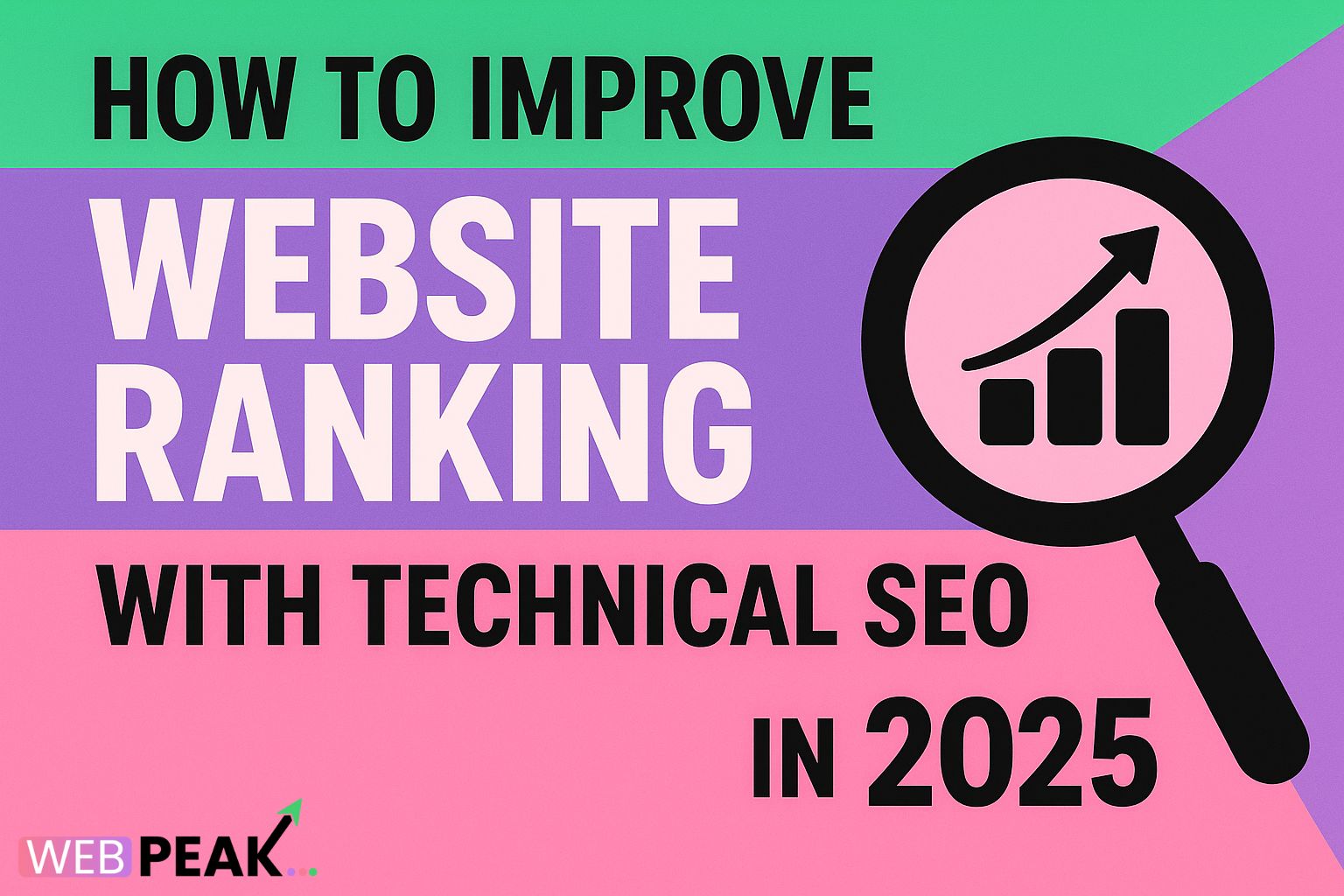How to Improve Website Ranking with Technical SEO in 2025
As search engines continue to evolve, businesses must adapt their SEO strategies to maintain visibility and competitiveness online. In 2025, technical SEO remains one of the most critical pillars of website optimization. It ensures that a site is not only user-friendly but also crawlable, indexable, and optimized for search algorithms. While on-page and content marketing strategies are important, without a solid technical foundation, even the best content can struggle to rank. This article explores how to improve website ranking with technical SEO in 2025, outlining actionable steps that webmasters, marketers, and business owners should prioritize.
Why Technical SEO Matters in 2025
Technical SEO goes beyond keywords and backlinks—it’s about ensuring that search engines can properly access and understand your website. In today’s digital landscape, Google and other search engines are placing more emphasis on site performance, user experience (UX), and mobile optimization. Technical SEO lays the groundwork for your content and marketing strategies to succeed. If ignored, issues like slow site speed, poor mobile compatibility, or indexing errors can severely limit visibility, regardless of how strong your content is.
1. Optimize Website Speed and Core Web Vitals
Google’s Core Web Vitals are still a ranking factor in 2025, and their importance continues to grow. These metrics measure the user experience, focusing on loading speed, interactivity, and visual stability.
- Largest Contentful Paint (LCP): Ensure your main content loads quickly, ideally within 2.5 seconds.
- First Input Delay (FID): Improve interactivity by minimizing delays when users engage with buttons or links.
- Cumulative Layout Shift (CLS): Prevent layout shifts by using proper image dimensions and avoiding intrusive ads.
Techniques such as implementing lazy loading, using a Content Delivery Network (CDN), compressing images, and minimizing JavaScript can drastically improve these metrics.
2. Mobile-First Indexing is Essential
Since Google primarily indexes the mobile version of websites, mobile optimization is non-negotiable. A responsive design that adapts seamlessly across devices is key. Test your site regularly on multiple screen sizes, simplify navigation, and ensure that interactive elements are accessible on touchscreens. Remember, mobile users make up the majority of online traffic, so poor mobile usability will directly affect your rankings.
3. Secure Your Website with HTTPS
Security is both a ranking factor and a trust signal. An SSL certificate (HTTPS) ensures that data transferred between your site and its visitors is encrypted. Google favors secure websites, and users are more likely to engage with brands they trust. In 2025, running a site on HTTP is simply not an option if you want to rank competitively.
4. Improve Crawlability and Indexing
Search engine bots need to crawl and index your pages efficiently. Technical SEO plays a significant role in ensuring this process runs smoothly.
- Create and submit XML sitemaps: Keep them updated and submit them to Google Search Console.
- Use robots.txt effectively: Prevent bots from crawling duplicate or irrelevant pages.
- Implement canonical tags: Avoid duplicate content issues by pointing search engines to the preferred version of a page.
- Fix broken links: Both internal and external broken links harm user experience and SEO.
A healthy crawl budget means Google spends time crawling your most important pages rather than wasting resources on low-value or duplicate content.
5. Structured Data and Schema Markup
Structured data provides search engines with detailed information about your content. Implementing schema markup can help your website stand out with rich snippets, such as star ratings, FAQs, or product details. In 2025, structured data remains a powerful tool for improving visibility and click-through rates in search engine results pages (SERPs).
6. Technical SEO for International and Multilingual Sites
If your business serves multiple countries or languages, implementing hreflang tags correctly is critical. They tell search engines which version of a page should appear in each region, preventing duplicate content issues and ensuring the right audience sees the right content. Inaccurate or missing tags can hurt both rankings and user experience.
7. Optimize for Voice and AI Search
With the growth of AI-driven search assistants and voice queries, websites need to adapt technically. Structuring content to answer conversational queries, optimizing for featured snippets, and using natural language markup will give your site a competitive advantage. Ensure your site loads quickly and delivers concise, accurate answers that AI systems can easily extract.
8. Regular Technical SEO Audits
Conducting routine SEO audits is essential for catching issues early. Tools such as Google Search Console, Screaming Frog, and SEMrush can help identify crawl errors, indexing problems, duplicate content, or slow-loading resources. By addressing technical problems promptly, you ensure that your website remains optimized as algorithms and user expectations evolve.
9. Leverage Professional SEO and Web Development Services
While it’s possible to handle technical SEO in-house, many businesses benefit from hiring experts to ensure everything is implemented correctly. Partnering with professionals can save time, avoid costly mistakes, and ensure your site performs at its peak. For instance, WEBPEAK offers full-service digital marketing solutions, including web development, SEO, and online marketing strategies. Their team can help you build a technically sound, high-performing website that drives traffic and conversions.
Final Thoughts
Technical SEO in 2025 is about more than just making a website search engine friendly—it’s about creating a seamless experience for users while satisfying search engine requirements. By focusing on site speed, mobile usability, structured data, crawlability, and security, businesses can significantly improve their search rankings. With algorithms becoming smarter, technical SEO acts as the foundation for all other SEO efforts. Whether you manage SEO internally or hire a digital marketing partner, investing in technical SEO is essential for long-term online success.





